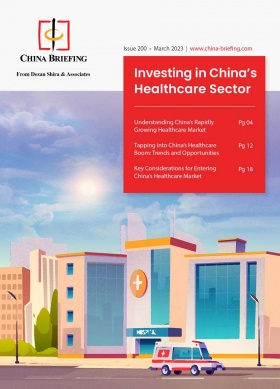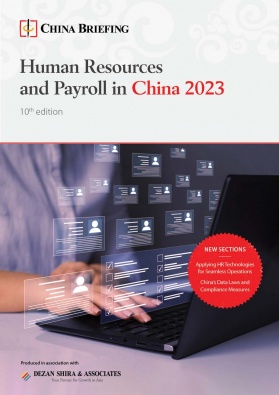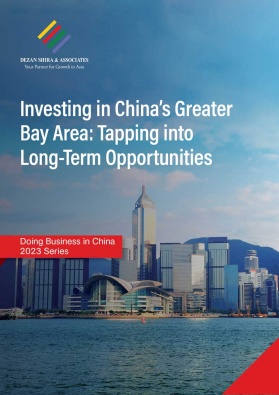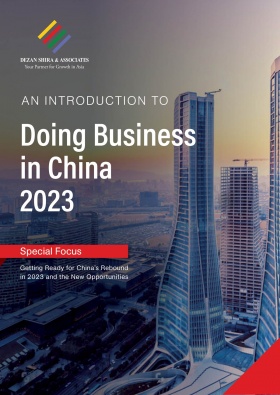State by State: China and Connecticut Trade
Though the third smallest state in the U.S., Connecticut has the country’s highest per capita income. Connecticut’s GDP came to nearly US$253 billion in 2014, and derives most of its wealth from the finance and insurance sectors.
Imports, exports and major industries
Manufacturing is Connecticut’s largest industry after finance and insurance. Electronics and computers also feature heavily in the state’s exports, making it a popular producer for China’s technology driven market. In 2014, China was Connecticut’s firth largest export market, with exports totaling US$880 million. The top exports are as follows:
- Transportation equipment- US$382 million
- Computers and electronics- US$123 million
- Non-electronic machinery- US$111 million
- Electrical equipment- US$55 million
- Chemicals- US$46 million
Though down by US$200 million in 2012, exports are set to continue increasing as China’s manufacturing sector can no longer keep up with domestic demand. Meanwhile, China is Connecticut’s second largest importer, after Canada. Total imports from China to Connecticut totaled almost US$3 billion in 2014, up 7.2 percent compared to the previous year.
Connecticut’s education sector also attracts significant revenue. Currently, there are almost 29,000 Chinese students enrolled in educational institutes across the U.S., with around 1,200 in Connecticut. Yale University, which graduated the first Chinese person to earn a degree in the U.S. in 1854, is a particular draw for Chinese students. With students increasingly able to afford full tuition fees and maintenance, China makes up a large part of the US’s international students: 31 percent of all US international students are Chinese nationals.
 RELATED: Pre-Investment and Entry Strategy Advisory
RELATED: Pre-Investment and Entry Strategy Advisory
Connecticut-China relations
In 1986, the Governors of Connecticut and Shandong Province signed a trade agreement, resulting in Connecticut and Shandong’s sister state status and the foundation of the Connecticut-China Council, which assists and oversees companies from Connecticut doing business in China.
Governor William O’Neill made a state visit to Shandong in 1987 to establish a positive trade relationship, with a focus on the technology sector. However, the formation of trade ties with China was not positively upheld by following Connecticut administrations, and trade consequently did not flourish as much as originally intended.
Nevertheless, members of the original delegation have maintained business in trade with China over the last two decades. It wasn’t until 2012 that another state visit was made to China by Governor Dannel Malloy, this time with a focus on aerospace and biotechnology. Governor Malloy made estimations that Connecticut could double its exports to China after the visit, which took the delegation back to Shandong, Beijing and Guangdong.
Investment opportunities
Aerospace
China is the world’s second largest air travel market, and its size is set to increase further by 30 percent over the next 10 years. This means China’s demand for highly specialized aeronautic parts and technologies will inevitably increase in the coming years.
As the worldwide headquarters for United Technologies Corporation and its subsidiaries, and home to more than 100 aerospace companies, Connecticut is a leader in the research, development and engineering of aerospace products. Though larger corporations in the industry account for almost half of the state’s export sales, in recent years small and medium sized enterprises (SMEs) have become more prolific and have generated a quarter of these sales. This is a trend which is forecast to continue, as smaller companies look to globalize and partake in international trade.
![]() RELATED: Investing in China’s Aerospace and Aviation Industry
RELATED: Investing in China’s Aerospace and Aviation Industry
Electronics/computer
The same applies for electronic and computer goods. Although China already has a sizable domestic base within these sectors, as it looks to develop further in these industries and manufacturing prices start to hike, China will be looking to outsource and depend on foreign suppliers.
Education
As the Chinese middle class becomes more affluent, the trend of sending children to study abroad is becoming ever more popular. Previously regarded as an institute of the elite, Yale is starting to look to recruit directly in China. Foreign students now represent 11 percent of the student body.
Tax Treaty – U.S. Trade with China
The United States has signed a Double Tax Treaty with China. This can reduce tax burdens under certain circumstances in both trade and any China legal establishment. Please seek professional advice for specific China investment requirements. Treaty details can be found here.
Further Support from Dezan Shira & Associates
Dezan Shira & Associates can service Connecticut-based companies that are looking to further develop their operation in China. The firm can help companies establish a direct office in the country and can guide them through the affiliated tax, legal and HR issues that come with doing so. To arrange a free consultation, please contact our U.S. office at usa@dezshira.com.
|
Asia Briefing Ltd. is a subsidiary of Dezan Shira & Associates. Dezan Shira is a specialist foreign direct investment practice, providing corporate establishment, business advisory, tax advisory and compliance, accounting, payroll, due diligence and financial review services to multinationals investing in China, Hong Kong, India, Vietnam, Singapore and the rest of ASEAN. For further information, please email china@dezshira.com or visit www.dezshira.com. Stay up to date with the latest business and investment trends in Asia by subscribing to our complimentary update service featuring news, commentary and regulatory insight. |
![]()
Importing and Exporting in China: a Guide for Trading Companies
In this issue of China Briefing, we discuss the latest import and export trends in China, and analyze the ways in which a foreign company in China can properly prepare for the import/export process. With import taxes and duties adding a significant cost burden, we explain how this system works in China, and highlight some of the tax incentives that the Chinese government has put in place to help stimulate trade.
China Investment Roadmap: the Automotive Parts Industry
This issue of China Briefing presents a roadmap for investing in China’s automotive industry. We begin by providing an overview of the industry, and then take a comprehensive look at key foreign investment considerations, including investment restrictions, tax incentives and manufacturing requirements. Finally, we discuss foreign investment opportunities in a part of the industry that receives substantial government support: new energy vehicles.
Using China’s Free Trade & Double Tax Agreements
In this issue of China Briefing, we examine the role of Free Trade Agreements and the various regional blocs that China is either a member of or considering becoming so, as well as how these can be of significance to your China business. We also examine the role of Double Tax Treaties, provide a list of active agreements, and explain how to obtain the tax minimization benefits on offer.
- Previous Article China Outbound: Local Economic Programs and Policy Package Implemented in ASEAN and India
- Next Article UK-China 7th Economic and Financial Dialogue: Opportunities in China for UK Investors

